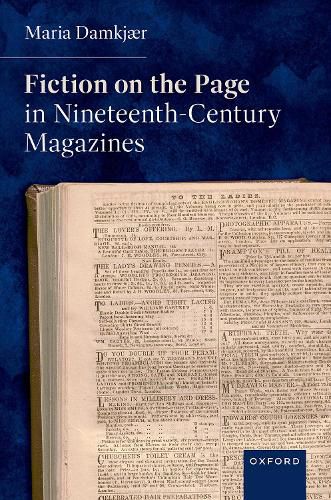Readings Newsletter
Become a Readings Member to make your shopping experience even easier.
Sign in or sign up for free!
You’re not far away from qualifying for FREE standard shipping within Australia
You’ve qualified for FREE standard shipping within Australia
The cart is loading…






What makes fiction recognizable as fiction? Texts are shaped by their material print, but this book argues that they can also be made in response to it: that the needs of the magazine in the nineteenth century spurred writers to create hybrid, entangled texts. Using book history, genre theory, and literary close-reading, this book argues that narrative fiction in the nineteenth-century popular periodical was a malleable substance. By looking at typography, and the attempts to squeeze in too much text, or stretch out too little text, the book asks what the relationship was between the page that needed filling and the short story that tried to fill it. In the messy hybrids and outliers, we explore what fiction might have become.The book works with magazines like the Englishwoman's Domestic Magazine (first series, 1852-59), the Family Herald (1842-1945), the Home Circle (1849-54), and authors like Elizabeth Gaskell, George Augustus Sala, and Samuel Beeton. It also includes a chapter on Charles Dickens's arguably least successful venture, Master Humphrey's Clock (1840-1), where Dickens was noticeably straining to sell and fill a weekly magazine. While the book is not attempting to destabilise the status of canonical fiction, it does ask how the page makes fiction happen; what kind of readers magazines imagined for themselves; and what readers thought they were reading when they picked up an issue. The book argues that magazines projected a print imaginary, a symbolic realm where the magazine fits perfectly into the lives of happy, active readers.
$9.00 standard shipping within Australia
FREE standard shipping within Australia for orders over $100.00
Express & International shipping calculated at checkout
What makes fiction recognizable as fiction? Texts are shaped by their material print, but this book argues that they can also be made in response to it: that the needs of the magazine in the nineteenth century spurred writers to create hybrid, entangled texts. Using book history, genre theory, and literary close-reading, this book argues that narrative fiction in the nineteenth-century popular periodical was a malleable substance. By looking at typography, and the attempts to squeeze in too much text, or stretch out too little text, the book asks what the relationship was between the page that needed filling and the short story that tried to fill it. In the messy hybrids and outliers, we explore what fiction might have become.The book works with magazines like the Englishwoman's Domestic Magazine (first series, 1852-59), the Family Herald (1842-1945), the Home Circle (1849-54), and authors like Elizabeth Gaskell, George Augustus Sala, and Samuel Beeton. It also includes a chapter on Charles Dickens's arguably least successful venture, Master Humphrey's Clock (1840-1), where Dickens was noticeably straining to sell and fill a weekly magazine. While the book is not attempting to destabilise the status of canonical fiction, it does ask how the page makes fiction happen; what kind of readers magazines imagined for themselves; and what readers thought they were reading when they picked up an issue. The book argues that magazines projected a print imaginary, a symbolic realm where the magazine fits perfectly into the lives of happy, active readers.